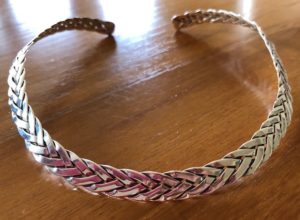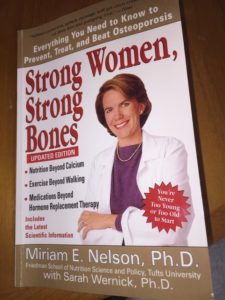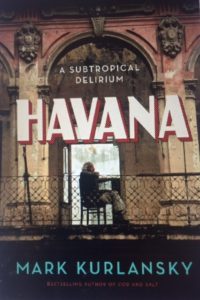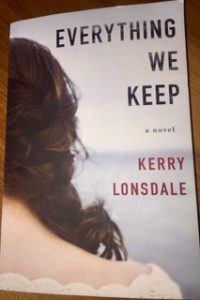I love Mexico for a lot of reasons—its people, the music, the food and its beautiful silver jewelry. This November my husband and I took a seven day Princess Cruise from Los Angeles down to Mexico. There were two days at sea and then we turned around stopping in Puerto Vallarta, Mazatlán, Cabo San Lucas, another day at sea and back to L.A.
It was a lot of fun and one of the best things was my $624 silver necklace from Mazatlán. After the ship docked there, we had breakfast and took a tour to see the place. The first stop was a jewelry store. The guide told us on the way that we could buy whatever we wanted with confidence that it was the real thing because all their silver jewelry was 95% pure. Princess Cruises had vetted the store because they didn’t want any passengers coming back to the ship and complaining that they’d been cheated.
So while I felt confident we wouldn’t be cheated, I also realized we probably wouldn’t be buying anything. Why? Because, in a situation like this, the jewelry is real and very beautiful, frequently gorgeous, but also very, very expensive.
The guide then passed out round yellow stickers with “Juan Carlos” written on them in black letters. He said all the sales people spoke English and if we showed the stickers, they would lower the price by 30%.
When Michael and I heard that, our faces lit up. That meant we could bargain. We always had a good time bargaining in Mexico even if, in the end, we couldn’t get the price down enough to actually buy anything.
The way we do it is, I wander around until I find something I’m interested in. Then Michael plays the straight man and I negotiate.
“Michael, why don’t we just go in and look around but not plan to buy anything?” I said.
“Well, I would like to get you something.” He responded.
“If Princess Cruises stands behind their jewelry, it’s probably going to be really beautiful and very expensive. How about we agree now on how much to spend? If we get our price, fine. But if not, let’s just walk away?”
“O.k.”
We walked into the store and to the very back where they were serving complimentary Margaritas at 10:00 in the morning. The Margaritas were good, probably the best ones we had on the whole trip!
We both started walking around the store, drinks in hand. The walls were floor to ceiling mirrors with clear glass shelves and waist high glass counters running along the sides and down the center. Every inch of glass was covered with silver: silver necklaces, earrings, watches, pendants, etc. I don’t think I’ve seen so much silver in one place since the last time I came to Mexico. And it was beautiful, artistic, gorgeous! I felt swept away as I knew I would.
I immediately found a necklace I did want so I tried it on as well as two or three others so that I didn’t appear too interested in the first one. Within a few seconds, a sales woman approached. I sensed that I wouldn’t do too well negotiating with her so I told her the jewelry was lovely but I was just looking.
I went looking for Michael and told him I had found something but was pretty sure it was going to be too expensive. None of the jewelry had prices which was a big sign that you could bargain and it was expensive.
I tried on several necklaces but told him it was the first one that I really wanted. A salesman approached. He seemed friendly and wanted to talk.
“Your jewelry is lovely,” I said.
“Yes,” he responded. “It’s 95% pure. You don’t have to polish it.”
“Really? Even if you put it in a drawer,” I said.
“No, never. Which one are you interested in?” he asked.
I showed him and asked how much it was. He looked at it, raised it to the light, looked at it again, “624”.
Now the exchange rate is 18 pesos to $1.00 U.S. That would make it around $35.00 dollars U.S., very affordable.
“Oh, 624 pesos?” I said.
“No, no! U.S. dollars. $624.”
“Oh. By the way, Juan Carlos, the Tour Guide, said to show you this.” I opened my hand so he could see the yellow sticker in my palm. “He said that would bring the price down by 30%.”
Out of the corner of my eye I could see Juan Carlos approaching us. He quietly joined our group.
“Yes! Yes.” He took his calculator out. “436.80.”
“Pesos?” I smiled.
“No! no. U.S. dollars.”
“Demasiado! Demasiado (too much).” I responded and tried to look sad. “Can you give us a better price?”
“I am giving you a better price. I just took 30% off the top.”
“I know. And the necklace is very beautiful. But it’s too expensive. Demasiado. Thank you,” and we started wandering around the store followed by the salesman and Juan Carlos.
“How much do you want to pay?” the salesman asked.
“Hmmmm,” I said, trying to gain time to think of what to say. Michael and I looked at each other. “Well, mmmmmm, what if we paid you 100 U.S. dollars cash, no credit card?”
“Hmmmmm,” he said. “100 U.S. dollars from you.” He pointed to Michael. “And, 100 U.S. dollars from you.” He pointed to me.
“No, no. Too much! Demasiado! 100 U.S. dollars solamente (only).” I said.
He paused to take a breath.
Juan Carlos spoke up, “Tomorrow we go to Cabo San Lucas. The jewelry there will be much more expensive. He’s really giving you a good price.”
The salesman smiled.
“Yes, you’re right, “I responded. “The jewelry is more expensive in Cabo. But, I have beautiful jewelry at home. I don’t need any more. We just stopped in here to look and the necklace caught my eye. But I don’t really need it. Actually, if we don’t buy this, we won’t be buying any jewelry on this trip.”
Juan Carlos said nothing but I noticed a few seconds later that he had wandered off.
That’s when the straight man came in. Michael said, “You know if you sell the necklace for 100 U.S. dollars, it’s sold. And, you have the money. But, if you don’t sell it, it stays on the counter, just sitting there, and who knows how long before you find another buyer?”
“Wait here.” The salesman said. He walked over to another counter, stopped and appeared deep in thought. He punched some numbers into his calculator. He paused. Finally he returned.
“O.k.” he said, 100 U.S. dollars cash.”



